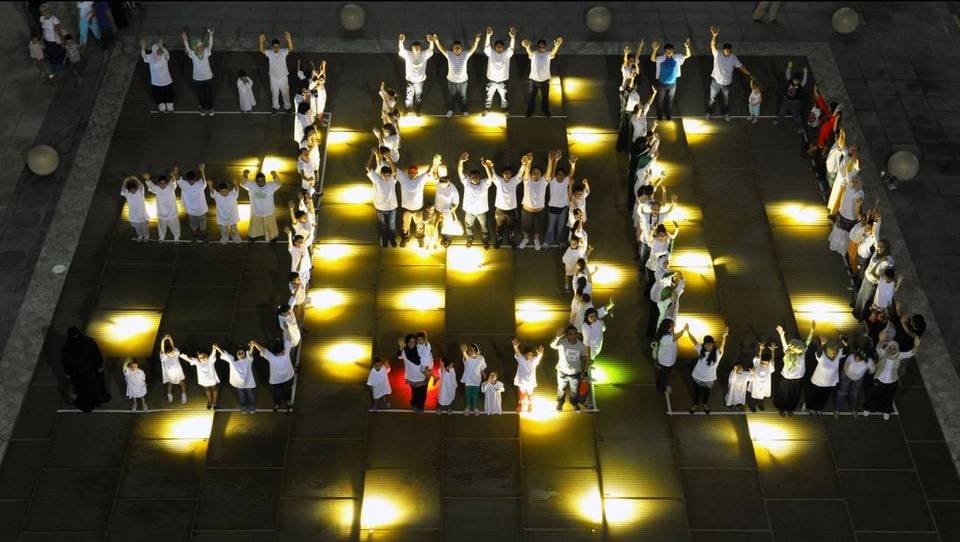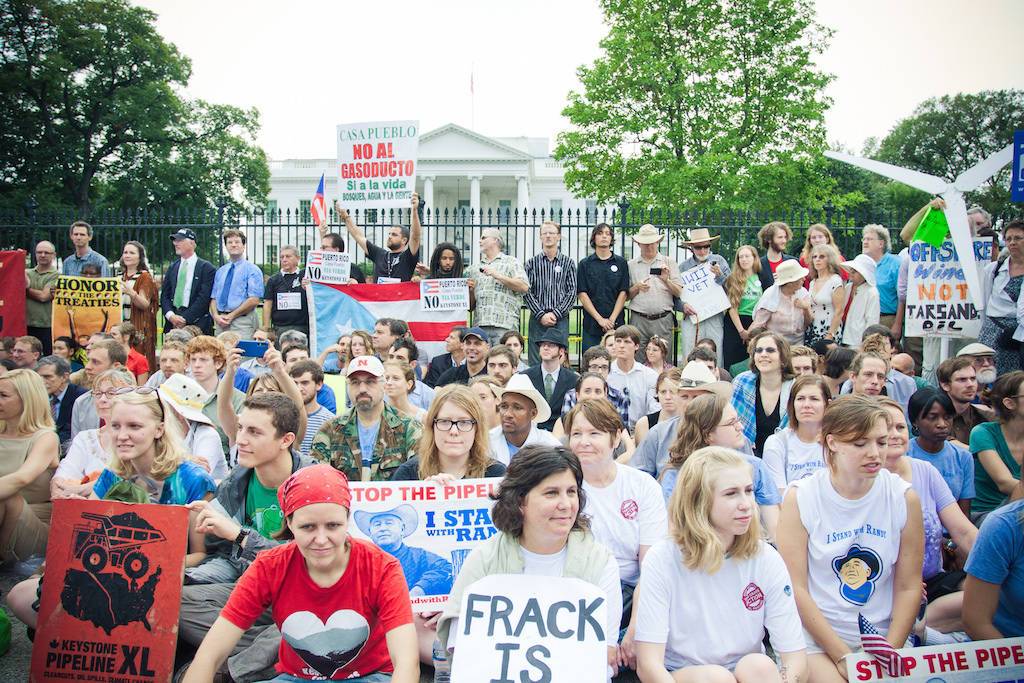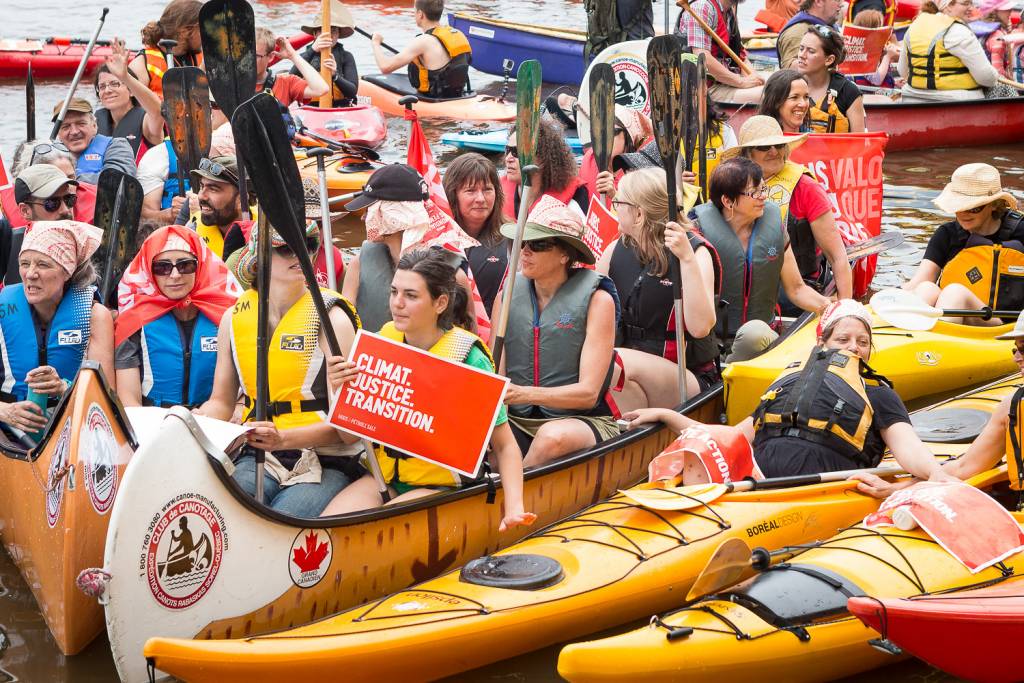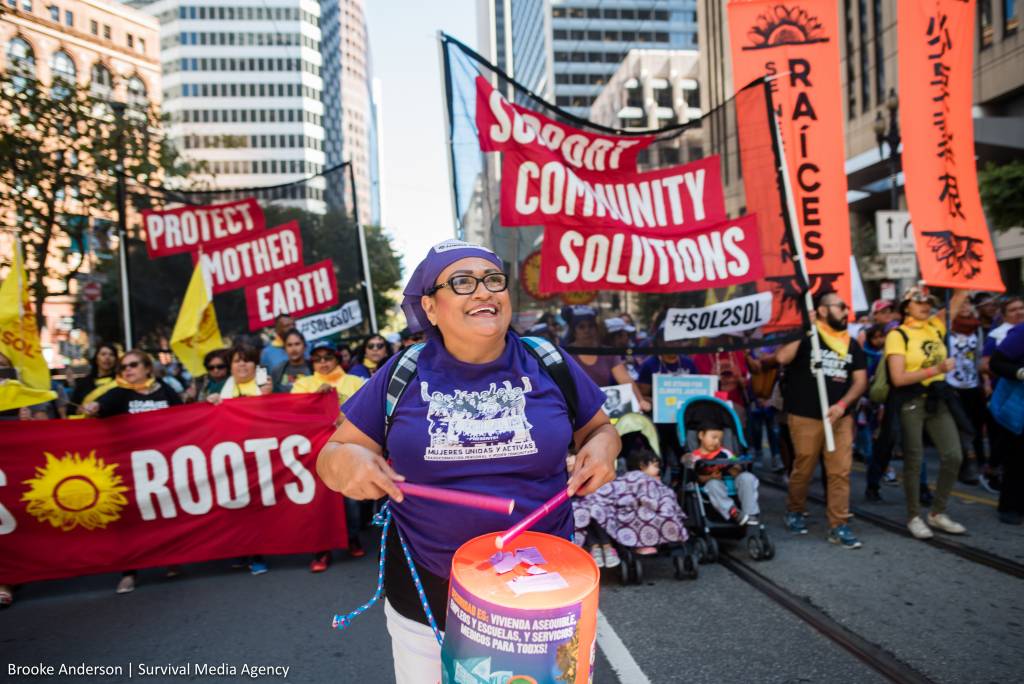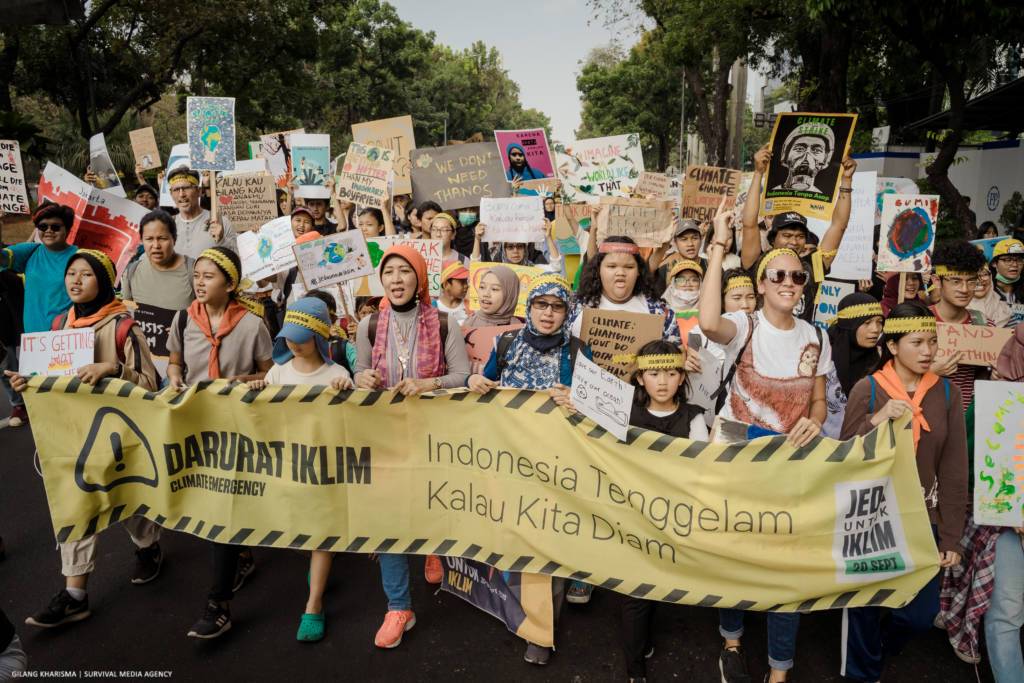350
2009 – 2019
350 Celebrates
a decade of action
Ten years after 350.org’s first global day of action, we celebrate our wins, reflect on lessons learned, and look to the fights ahead.
When we started organising back in 2009, we saw the climate crisis as the most important issue facing humanity – but climate action was mired in politics and virtually stalled.
We didn’t have a straight answer for how to fix things, but we knew what was missing: a climate movement that reflected the scale of this crisis. Ten years later, we see people from all walks of life committed to taking action to solve it. And we’re growing every day.
To build a just, equitable, and fossil fuel-free world, we need you with us. Take a look at the timeline below to see how far we’ve come, and the movement you’ve helped build.
Timeline
Origins
350.org was founded by a group of university friends in the United States along with author Bill McKibben, who wrote one of the first books on global warming for the general public.
Their vision has transformed into an increasingly diverse global climate movement lifting up the voices of communities all over the world.
2009
First global day of action
Ahead of COP15 in Copenhagen, we mobilised people in 181 countries to come together with one message for world leaders: We need a fair, ambitious, and binding climate treaty to stay below 350 parts per million of carbon dioxide in the atmosphere. CNN called it ‘the most widespread day of political action in our planet’s history’.
Unfortunately, no binding deal resulted – but together we planted the seeds for taking people power to a new scale with our first international day of climate action.
2010
‘A new kind of movement’
It was time to get to work. On 10/10/10, 350.org threw a Global Work Party, where people all over the world got their hands dirty for the benefit of the planet.
We joined together to dig community gardens, install solar panels, plant trees – and show political leaders they needed to get to work, too.
It also signalled a new kind of movement beyond a single day of action: one that would continue to hold political leaders to account.
2011
Keystone XL resistance
We led an ambitious effort to stop Keystone XL – one of North America’s most dangerous pipelines.
10,000 protesters gathered outside the White House in Washington, D.C., adding to the resistance against fossil fuel infrastructure across the world.
We also introduced ‘trainings for trainers’ to accelerate and scale the movement, equipping thousands with tools to be climate leaders in their own communities.
2012
The divestment movement starts
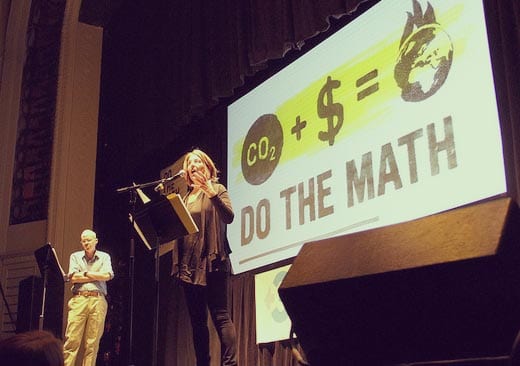
Photo: 350.org
Bill McKibben and Naomi Klein’s Do the Math Tour showed the world that the fossil fuel industry already held existing stockpiles of coal, oil, and gas that, if used, would blow through our carbon budget five times over.
The resulting film galvanised local groups at campuses across North America to demand that their universities take their financial holdings out of fossil fuels. The Fossil Free divestment movement was born, taking its cue from earlier activist traditions, particularly the anti-apartheid movement in South Africa.
2013
Global training goes big
471 young activists from 135 countries were trained by 89 facilitators at Global Power Shift in Istanbul, Turkey – and it was just the beginning. The newly trained activists returned home to hold Power Shifts in their own countries, from India to Vanuatu, Ukraine to Thailand.
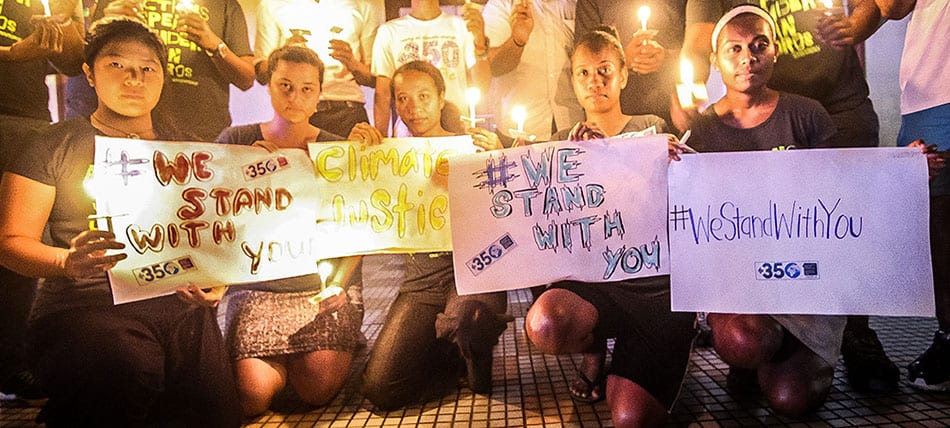
Solidarity in the wake of Typhoon Haiyan. Photo: 350 East Asia
Typhoon Haiyan ravaged the Philippines. We got to work lending solidarity, fundraising for relief, and amplifying the inherent injustice of the fact that climate change most affects those who’ve done the least to cause the problem.
2014
Massive march in New York
The People’s Climate March in New York City on 21 September saw an astounding 400,000 people take to the streets and over 2,000 actions around the world.
Divestment from fossil fuels escalated, with new campaigns established in Europe, Australia, and New Zealand.
In Fossil Free’s first year as a global campaign, 181 institutions and cities, and over 700 individuals committed to divest over $50 billion USD in assets.
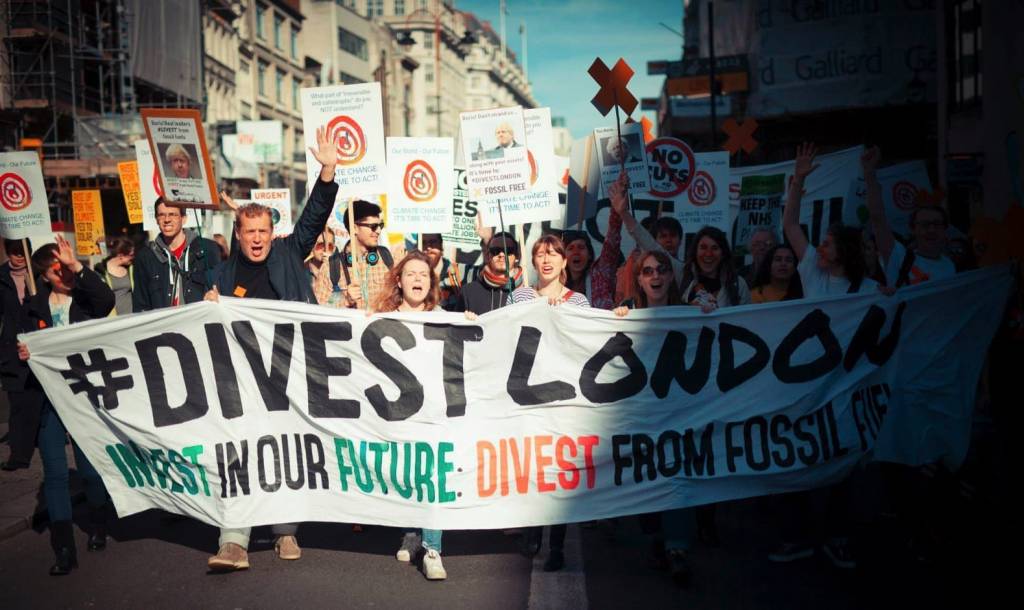
Photo: Divest London
2015
Paris Climate Agreement and more wins
Despite a state of emergency declared in France, 10,000 people were on the streets of the capital to usher in the Paris Agreement, supported by another 775,000 in the streets around the world. 195 signatories committed to reduce emissions – but nowhere near enough to stay below 1.5˚C.
President Obama finally rejected Keystone XL as resistance to other fossil fuels and extraction methods solidified globally.
51 municipalities banned fracking across Brazil, and the world’s largest anti-fracking march to date was held in Oakland, California, USA.
In Germany, activists entered and occupied a mammoth lignite coal mine for the first iteration of Ende Gelande. The community of Palawan in the Philippines fought off a proposed coal plant leading to a ban of all future coal on the islands.
2016
Break free from fossil fuels
To keep pressure on leaders, a week of action targeting coal, oil, and gas projects brought together 30,000 people in 20 countries. ‘Keep it in the ground’ became an international rallying cry.
We launched the #ExxonKnew campaign after revelations that the fossil fuel company knew about climate change back in the 1960s but did nothing to stop it.
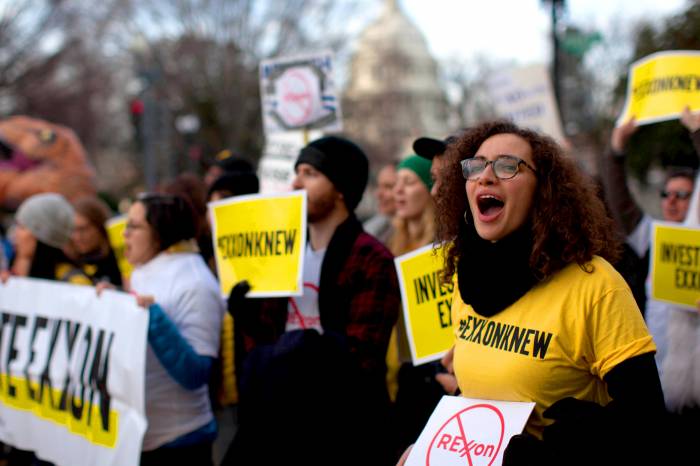
Photo: Eman Mohammed
The 350 Trainings website shared the skills and tools community organisers would need to go up against the power of the fossil fuel industry.
2017
More pipelines and coal plants cancelled
We celebrated with our First Nations partners when the Energy East pipeline was cancelled in Canada, keeping 1.1 million barrels of tar sands oil per day in the ground.
In Turkey, grassroots resistance forced cancellations of two coal plants in the Aliaga region.
The second People’s Climate March pushed back against Trump and newly elected climate-denier politicians around the world. 200,000 participants came out for the Washington, D.C. march.
Divestment topped $6 trillion USD and arguably went mainstream. New York City committed to divest its $190 billion pension fund and sue five of the biggest fossil fuel companies for climate damages from superstorms like Hurricane Sandy.
2018
IPCC report on 1.5˚C
In Canada, Indigenous-led mobilisation forced the Federal Court of Appeal to overturn government approval of Kinder Morgan’s Trans Mountain pipeline extension. New Zealand banned all new permits for new blocks of oil and gas exploration offshore.
During Rise for Climate, a global day of action, 250,000 people mobilised around the world.
A report from the United Nations’ Intergovernmental Panel on Climate Change (IPCC) sounded the alarm on the need to wind down fossil fuel production immediately.
We launched the People’s Dossier on 1.5˚ to connect the dots between temperature increase and climate impacts on communities. Over 300 groups printed and delivered the IPCC report to local governments.
The Fossil Free movement celebrated an important milestone: Over 1,000 institutions divested over $8 trillion USD in managed assets from fossil fuels.
2019
Global Climate Strike
The Lamu coal plant in Kenya was halted. Two states in Brazil, Paraná and Santa Catarina, passed fracking bans that will leave shale gas reserves larger than North America’s Marcellus in the ground forever, and municipal bans across the country numbered 410.
Responding to a call from youth from Fridays For Future, a record 7.6 million people took to the streets to strike for climate action as part of the Global Climate Strike — the biggest climate mobilisation in history.
In coalition with other dedicated organisations, 350.org brought together organisers, businesses, and citizens of the world to stop business as usual.
More than 6,000 actions took place in 185 countries; 73 trade unions representing millions of workers came out in support of the strikes; and thousands of businesses, organisations, and websites joined in.
The divestment movement reported over $11 trillion USD in assets divested.
The Next 10
In this short documentary, 350.org founders and organisers reflect on how far we’ve come and the future ahead.
